Do you have a question about the Triumph Trophy SE and is the answer not in the manual?
Explains symbols like Warning, Caution, and Note used for important information.
Details the Warning symbol's significance for potential personal injury or loss of life, and Caution for equipment damage.
Highlights restrictions for off-road use, towing, load limits, and catalytic converter heat safety.
Covers safety regarding fuel, exhaust fumes, protective gear, and parking precautions.
Emphasizes safe riding, maintenance, handlebar/footrest usage, and speed management.
Labels various motorcycle components and handlebar controls with corresponding numbers.
Details the location of the Vehicle Identification Number (VIN) and Engine Serial Number.
Illustrates the layout of instrument panel indicators and describes various warning lights.
Shows the arrangement and types of information displayed on the multi-function screen.
Details warning lights for oil pressure, coolant temperature, battery, ABS, and engine management.
Covers warning lights for Tyre Pressure Monitoring, Electronic Suspension, and Traction Control.
Guides on setting clock, displaying temperature, and understanding the gear position indicator.
Explains cruise control activation, deactivation, speed adjustment, and usage guidelines.
Covers ignition key functions, switch positions, handlebar controls, and security warnings.
Specifies fuel type, octane, refuelling safety, and fuel tank cap operation.
Advises on proper brake application and how to adjust brake and clutch levers.
Details side stand use, interlock system, parking safety, and centre stand operation.
Advises on seat care, removal/refitting of pillion and rider seats, and height adjustment.
Describes cockpit and under-seat stowage boxes, including usage and safety warnings.
Details locations of accessory sockets and how to adjust the windscreen.
Guides on removing, installing, operating, and locking panniers.
Details top box mounting, lid operation, security, and load warnings.
Explains the running-in process for new engines and provides specific recommendations.
Step-by-step instructions for safely stopping and starting the motorcycle engine.
Guides on smoothly moving off and changing gears using the clutch and pedal.
Explains the linked brakes, ABS, and proper braking techniques for various conditions.
Details how ABS works, its limitations, and associated warnings regarding corners and tyre choice.
Provides instructions for parking the motorcycle safely on various surfaces and inclines.
Explains how accessories and loads affect motorcycle handling, stability, and requires speed reduction.
Details maximum payload limits for various storage locations on the motorcycle.
Instructs passengers on safe posture and rider adaptation to passenger presence for stability.
Emphasizes the vital role of regular maintenance for safety and reliability based on mileage.
Highlights dealer responsibility, advice on schedules, and dangers of incorrect maintenance.
Guides on checking and topping up engine oil, including oil and filter change procedures.
Explains coolant level checks, the importance of corrosion inhibitors, and coolant type warnings.
Guides on inspecting and adjusting brake fluid levels and warns about fluid type and contamination.
Explains how to adjust front fork rebound damping and rear spring pre-load.
Covers tyre wear, correct inflation pressures, and minimum tread depth requirements.
Advises using approved tyres, dealer fitment, and warns against non-recommended tyres.
Details battery care, charging procedures, safety precautions, and storage guidelines.
Indicates fuse box locations and explains how to identify blown fuses using tables.
Guides on adjusting headlights and replacing headlight and position light bulbs.
Outlines steps for preparing the motorcycle for storage, including fuel, engine oil, and spark plugs.
Covers cooling system checks, battery removal/storage, and selecting a suitable storage environment.
Guides on preparing the motorcycle after storage, including safety checks and a test ride.
Lists physical dimensions, weights, engine type, displacement, and bore/stroke.
Details engine performance figures, lubrication type, capacities, and cooling system parameters.
Lists fuel system type, injectors, fuel pump, fuel type, tank capacity, and ignition details.
Specifies transmission type, clutch type, final drive ratio, and gear ratios for all gears.
Lists tyre sizes, recommended cold pressures, and approved tyre combinations.
Details battery type, alternator, lighting specifications, and frame rake/trail.
Explains symbols like Warning, Caution, and Note used for important information.
Details the Warning symbol's significance for potential personal injury or loss of life, and Caution for equipment damage.
Highlights restrictions for off-road use, towing, load limits, and catalytic converter heat safety.
Covers safety regarding fuel, exhaust fumes, protective gear, and parking precautions.
Emphasizes safe riding, maintenance, handlebar/footrest usage, and speed management.
Labels various motorcycle components and handlebar controls with corresponding numbers.
Details the location of the Vehicle Identification Number (VIN) and Engine Serial Number.
Illustrates the layout of instrument panel indicators and describes various warning lights.
Shows the arrangement and types of information displayed on the multi-function screen.
Details warning lights for oil pressure, coolant temperature, battery, ABS, and engine management.
Covers warning lights for Tyre Pressure Monitoring, Electronic Suspension, and Traction Control.
Guides on setting clock, displaying temperature, and understanding the gear position indicator.
Explains cruise control activation, deactivation, speed adjustment, and usage guidelines.
Covers ignition key functions, switch positions, handlebar controls, and security warnings.
Specifies fuel type, octane, refuelling safety, and fuel tank cap operation.
Advises on proper brake application and how to adjust brake and clutch levers.
Details side stand use, interlock system, parking safety, and centre stand operation.
Advises on seat care, removal/refitting of pillion and rider seats, and height adjustment.
Describes cockpit and under-seat stowage boxes, including usage and safety warnings.
Details locations of accessory sockets and how to adjust the windscreen.
Guides on removing, installing, operating, and locking panniers.
Details top box mounting, lid operation, security, and load warnings.
Explains the running-in process for new engines and provides specific recommendations.
Step-by-step instructions for safely stopping and starting the motorcycle engine.
Guides on smoothly moving off and changing gears using the clutch and pedal.
Explains the linked brakes, ABS, and proper braking techniques for various conditions.
Details how ABS works, its limitations, and associated warnings regarding corners and tyre choice.
Provides instructions for parking the motorcycle safely on various surfaces and inclines.
Explains how accessories and loads affect motorcycle handling, stability, and requires speed reduction.
Details maximum payload limits for various storage locations on the motorcycle.
Instructs passengers on safe posture and rider adaptation to passenger presence for stability.
Emphasizes the vital role of regular maintenance for safety and reliability based on mileage.
Highlights dealer responsibility, advice on schedules, and dangers of incorrect maintenance.
Guides on checking and topping up engine oil, including oil and filter change procedures.
Explains coolant level checks, the importance of corrosion inhibitors, and coolant type warnings.
Guides on inspecting and adjusting brake fluid levels and warns about fluid type and contamination.
Explains how to adjust front fork rebound damping and rear spring pre-load.
Covers tyre wear, correct inflation pressures, and minimum tread depth requirements.
Advises using approved tyres, dealer fitment, and warns against non-recommended tyres.
Details battery care, charging procedures, safety precautions, and storage guidelines.
Indicates fuse box locations and explains how to identify blown fuses using tables.
Guides on adjusting headlights and replacing headlight and position light bulbs.
Outlines steps for preparing the motorcycle for storage, including fuel, engine oil, and spark plugs.
Covers cooling system checks, battery removal/storage, and selecting a suitable storage environment.
Guides on preparing the motorcycle after storage, including safety checks and a test ride.
Lists physical dimensions, weights, engine type, displacement, and bore/stroke.
Details engine performance figures, lubrication type, capacities, and cooling system parameters.
Lists fuel system type, injectors, fuel pump, fuel type, tank capacity, and ignition details.
Specifies transmission type, clutch type, final drive ratio, and gear ratios for all gears.
Lists tyre sizes, recommended cold pressures, and approved tyre combinations.
Details battery type, alternator, lighting specifications, and frame rake/trail.
| Engine Type | Liquid-cooled, 12 valve, DOHC, in-line 3-cylinder |
|---|---|
| Displacement | 1215 cc |
| Bore x Stroke | 85 x 71.4 mm |
| Compression Ratio | 11.0:1 |
| Max Torque | 120 Nm @ 6, 450 rpm |
| Fuel System | Multipoint sequential electronic fuel injection |
| Final Drive | Shaft |
| Clutch | Wet, multi-plate |
| Gearbox | 6-speed |
| Frame | Aluminium beam twin-spar |
| Front Tyre | 120/70 ZR17 |
| Rear Tyre | 190/55 ZR17 |
| Fuel Tank Capacity | 26 litres |
| Max Power | 134 PS / 132 bhp @ 8, 900 rpm |
| Exhaust | Stainless steel 3 into 1 |
| Front Suspension | WP 43mm upside down forks, adjustable rebound and compression damping |
| Rear Suspension | WP monoshock, adjustable rebound and compression damping |
| Front Brakes | Twin floating discs, Nissin 4-piston calipers, ABS |
| Rear Brakes | Single 282mm disc, Nissin 2-piston caliper, ABS |
| Front Wheel | Cast aluminium alloy 17 x 3.5in |
| Rear Wheel | Cast aluminium alloy 17 x 6.0in |
| Seat Height | 800 mm (adjustable) |
| Wet Weight | 301 kg |
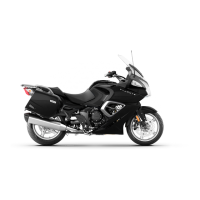
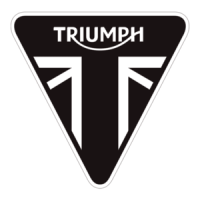

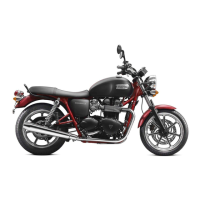
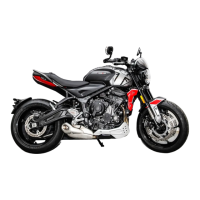

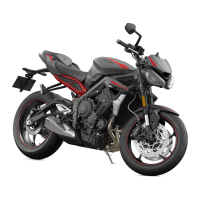



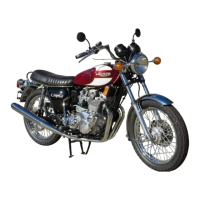

